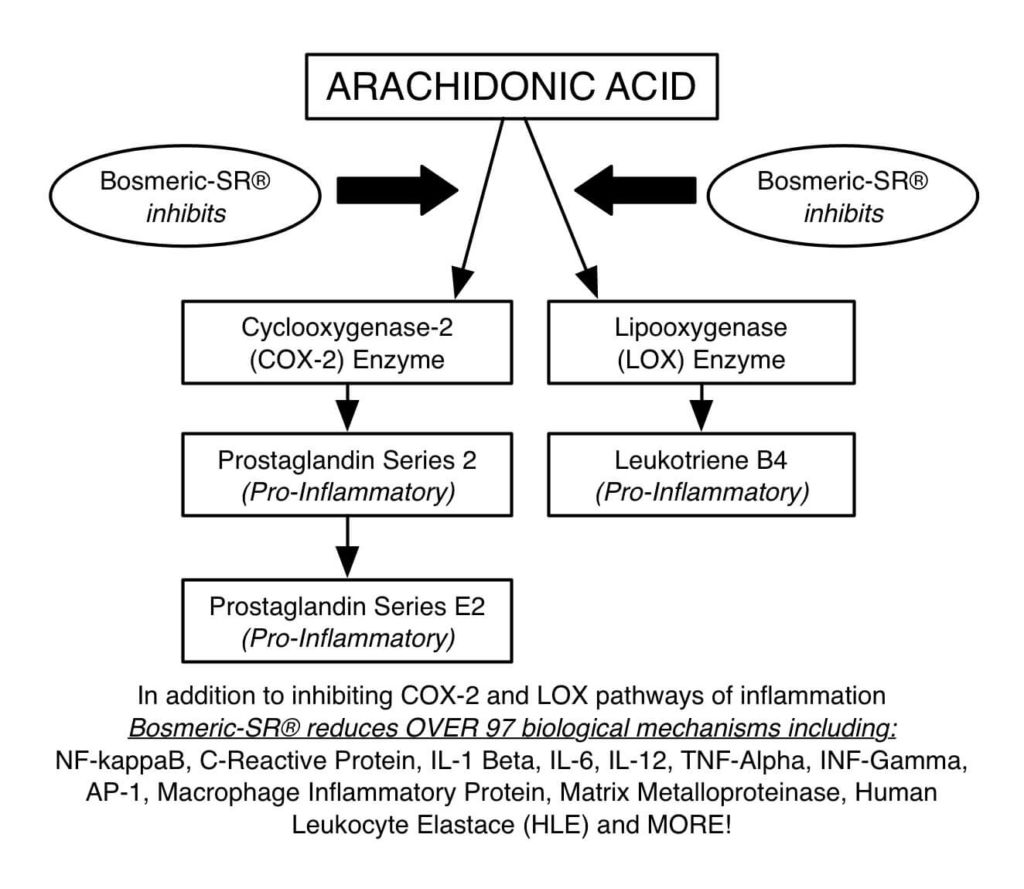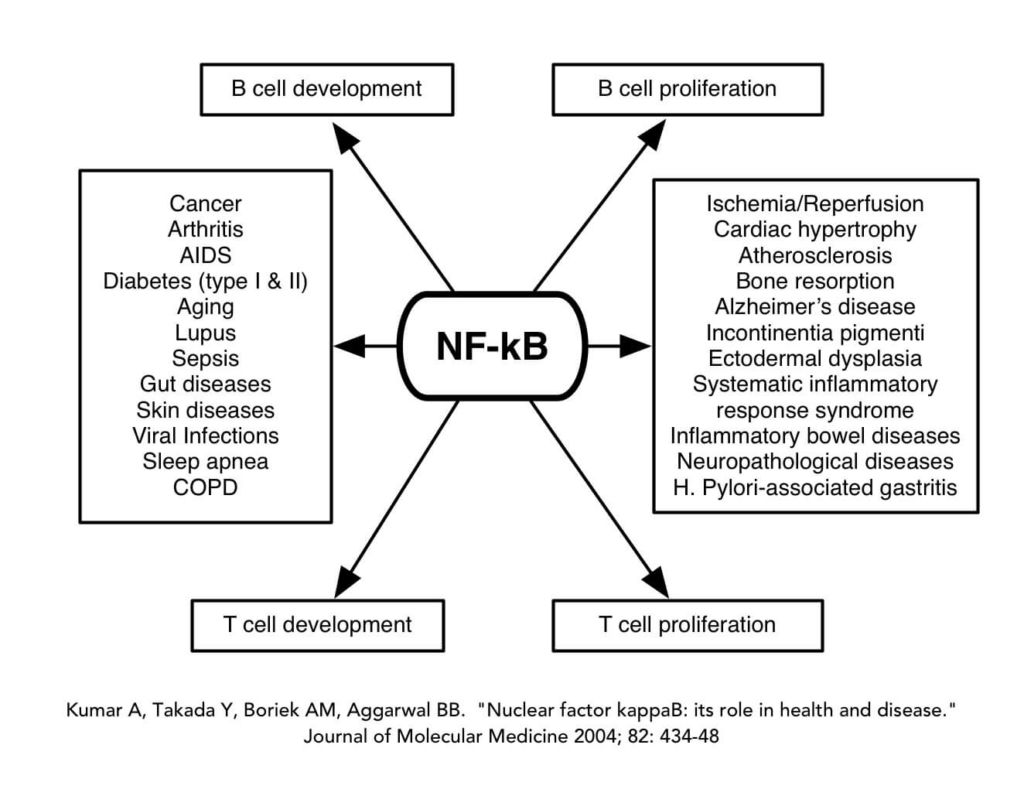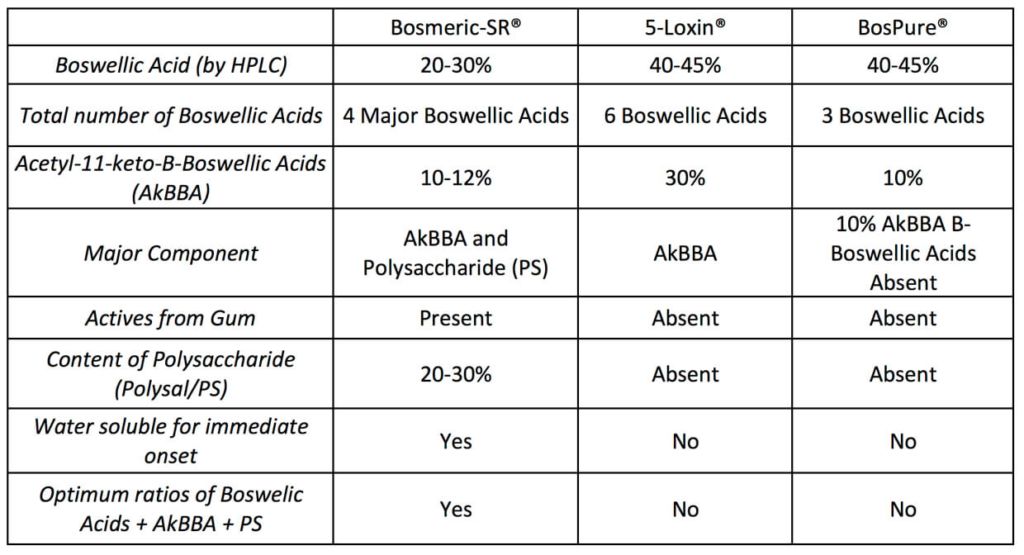The role of boswellia (frankincense) for cancer
Boswellia serrata is a species of tree that primarily grows in India (and also grows in the Arabian Peninsula and northeastern Africa). It produces a resin commonly known as frankincense. Biblical references to frankincense — including it being one of the gifts that the magi brought to baby Jesus — have made it popular worldwide in recent years. But it is an almost “magical” compound that has been used for thousands of years in India, China, and Greece for a treatment of inflammatory conditions.
Here is a short list of the documented activities and actions of boswellia: [1]
- Anti-inflammatory
- Antiarthritic
- Antirheumatic
- Antidiabetic
- Antihyperlipidemic (prevents elevated blood lipids)
- Antiasthmatic
- Anticancer
- Analgesic (pain-relieving)
- Hepatic-protective (liver protection)
- Colon-protective
- Immune-modulatory (positively affects or strengthens the immune system)
The magi brought gifts of frankincense, myrrh, and gold; interestingly, these three items can be further identified as three powerful herbs:
- “Frankincense” is boswellia.
- “Myrrh” is almost certainly the guggul plant (Commiphora wightii).
- “Gold” is thought to be turmeric, as it was the “golden spice” and was traded more than gold during the height of the spice trade.
Today we understand the three wise men were bringing Ayurvedic medicines to baby Jesus.
Frankincense was very popular worldwide for thousands of years. During the sixteenth century in France, frankincense was used in battlefield medicine for the treatment of acute pain and swelling. Although practitioners of Ayurvedic medicine have also used Boswellia serrata for thousands of years to treat arthritis and asthma, a more recent scientific consensus appears to show that frankincense positively impacts inflammation throughout the body and is effective for a number of conditions, including osteoarthritis and rheumatoid arthritis, [2] inflammatory bowel disease (colitis), [3] colon polyps, [4] and lung diseases such as allergies and asthma. [5]
Frankincense is even the subject of increasing research on its anticancer and anti-inflammatory effects on traumatic brain injury and brain tumors. [6]
Frankincense is not only historically important as internal medicine, but it has been used throughout various religious communities for centuries as incense. You might have experienced frankincense at church or seen it on a televised religious broadcast. Typically, a priest or other clergy member will walk down the main aisle in the church holding a ceremonial censer of smoky incense, which burns throughout the ceremony.
Research into why frankincense has been the preferred incense used in religious practices indicates it may be due to its documented mildly psychoactive properties, which relieve a variety of stressful emotional states like anxiety and depression. The research appears to support its positive effects and its purported ability to draw people in contemplation, meditation, and prayer.
Frankincense stimulates the areas of the brain utilized in states of focus, relaxation, and calm. Therefore, the choice of frankincense might be purposeful, putting us in a calmer state, enabling us to get in touch with our inner being, and fostering a feeling of safety. [7] It is quite amazing how Boswellia serrata reduces not only the inflammation of the body but also that of the mind.
Thanks to the emergence of natural boswellia products, there are now more than 400 published studies on boswellia, with an average of one to two studies published weekly.
Which boswellia extract is best for me?
You might have tried supplements with boswellia before with some or limited success. This is because, as is also the case with curcumin, most boswellia is not standardized. Consumers often get boswellia extract from bark or root powder when the actual anti-inflammatory properties come from the gum resin. Thus, the part of the boswellia tree that manufacturers use makes all the clinical difference.
Without standardization of certain components (boswellic acids, AKBBA, polysaccharides, etc.), the effectiveness of a boswellia supplementA product, generally taken orally, that contains one or more ingredients (such as vitamins or amino acids) that are intended to supplement one's diet and are not considered food. can vary from batch to batch, bottle to bottle, manufacturer to manufacturer, season to season, and species to species. Beware of products on the market that are using other parts of the boswellia plant — like the leaves and bark — since these plants are grown more for their use as an incense and not as an efficacious, potent, and pure supplement. But they can still be listed as “boswellia” on supplement bottles!
Research has now shown that certain primary components of boswellia are responsible for its health benefits. Therefore, in order to get true therapeutic value, you must ensure that you are obtaining those components. Various types of boswellia have been shown to have more or greater benefits than others, with Boswellia serrata leading the research. [8]
Let me help educate you on what to look for when it comes to a boswellia product.
First, look to see if it is standardized to a certain amount of boswellic acids. Boswellic acids exhibit anti-inflammatory, analgesic, and antiarthritic activities through a unique 5-lipoxygenase (5-LOX) and human leukocyte elastase (HLE) inhibition mechanism. These acids are crucial to creating an effective boswellia product.

Boswellic acids also inhibit the activation of NF-kB (see figure below) and, consequently, downregulate TNF-alpha and decrease the pro-inflammatory cytokines IL-1, IL-2, IL-4, IL-6, IFN-gamma, and LTB4. [9] This means that boswellia helps the lower various inflammatory markers involved in many diseases. Boswellia has recently gained significant attention due to its effect on chronic inflammatory diseases and its anticancer properties.

If a boswellia product is not standardized to contain boswellic acids, then you are not getting the full benefit from it. I would not take a boswellia product that contains no boswellic acids. In general, clinical studies have found that products standardized to contain from 30 percent to 85 percent boswellic acids are the most effective on their own. (But the results are even better when combined with other boswellia components. See below.)
Second, look for how much AKBBA (acetyl-11-keto-beta-boswellic acid) is in the product. This should also be standardized to a certain percentage (between 5 percent and 30 percent AKBBA). This component appears to be just as important in improving effectiveness as boswellic acids alone. Products standardized to have AKBBA and boswellic acids are much more effective than Boswellia serrata (extract or powder) alone.
Third, look for PS (Polysal-polysaccharide). A newly discovered part of boswellia has been named a Polysal (PS) fraction. In Bosmeric-SR, this Polysal fraction is called Boswellin PS. It is the new benchmark for boswellia supplements as it contains all three major components of the compound (Polysal, AKBBA, and boswellic acids).
Without all three of these components, you simply aren’t getting what your boswellia product is promising.
Boswellia serrata-Boswellin PS: The new gold standard
Boswellin PS is the new gold standard for boswellia. In addition to its documented anti-inflammatory effects, this combination of the three critical compounds at specific potencies has been shown to be more readily and more quickly absorbed. Boswellin PS contains the key polysaccharide fraction Polysal that improves therapeutic benefits and increases the absorption and efficacy of both the boswellic acids and AKBBA. [10] Studies have been conducted to see how much of each of these main components one needs to maximize the anti-inflammatory benefits of boswellia.
In developing Bosmeric-SR, I intended to create a full-spectrum anti-inflammatory activity that has an immediate onset of action (water soluble) and a sustained-release effect that lasts more than eight hours. Boswellin PS gives us a clinically significant synergistic effect from a patented compound. Boswellin PS contains only clinically tested, specific dosages of Polysal, boswellic acids, and AKBBA, providing for maximum clinical benefits every time.
Once an ingredient has shown promise, most companies will try to cram the highest dose possible into their supplements. For example, some companies use only AKBBA at 90 percent concentration, with no boswellic acids or Polysal. This type of “more is better” approach, which I consider to be the general pharmaceutical approach, does not necessarily translate into better results. Scientific data has shown that synergistic compounds — not a “scorched earth” approach that bombards the body with high doses — appear to have the most beneficial effects.
The careful scientific investigation into each of the three important synergistic components of boswellia has detailed the specific ratios that provide the greatest anti-inflammatory effects. Bosmeric-SR uses these ratios. When it comes to a boswellia product, high concentrations of these three ingredients matter less than specific potencies in the right combination. Bosmeric-SR provides just that.
How much Boswellin PS should I take?
If you take a product that is standardized to have at least 65 percent boswellic acids and 10 percent AKBBA, then I recommend 500 mg twice daily with food. But if you take Bosmeric-SR, which contains the patented components of boswellia in the most effective ratios (Boswellin PS), then you need to take only 200-400 mg (that’s one to two caplets of Bosmeric-SR) twice daily with food. For those with chronic or severe health conditions such as cancer, 2 caplets three times daily with food is recommended to obtain 24 hours of inflammation support. Again, with the synergistic and enhancing benefits of curcuminoids (combined additionally with ginger and black pepper), Bosmeric-SR is more effective than even boswellia products that may offer higher concentrations of AKBBA or boswellic acids alone.

For more detailed information on 10 steps to optimum health using diet and lifestyle changes and the use of natural anti-inflammatories, please read An Inflammation Nation.
Modified by permission from An Inflammation Nation by Sunil Pai © 2015.
References
- M Z Siddiqui, “Boswellia Serrata, a Potential Antiinflammatory Agent: An Overview,” Indian J Pharm Sci 73, no. 3 (2011): 255–61; M Schubert-Zsilavecz, “Boswellia Serrata: An Overall Assessment of In Vitro, Preclinical, Pharmacokinetic and Clinical Data,” Clin Pharmacokinet 50, no. 6 (2011): 349–69; C Cuaz-Perolin et al., “Antiinflammatory and Antiatherogenic Effects of the NF-kappaB Inhibitor Acetyl-11-keto-beta-boswellic Acid in LPS-Challenged ApoE-/- Mice,” Arterioscler Thromb Vasc Biol 28, no. 2 (2008): 272–7; A Moussaieff et al., “A Novel Anti-inflammatory Compound Isolated from Boswellia Resin, Inhibits Nuclear Factor-kappa B Activation,” Mol Pharmacol 72, no. 6 (2007): 1657–64; D Dey et al., “Inhibition of LPS-Induced TNF-α and NO Production in Mouse Macrophage and Inflammatory Response in Rat Animal Models by a Novel Ayurvedic Formulation, BV-9238,” Phytother Res 28, no. 10 (2014): 1479–85; A Ahangarpour et al., “Effect of Boswellia Serrata Supplementation on Blood Lipid, Hepatic Enzymes and Fructosamine Levels in Type2 Diabetic Patients,” J Diabetes Metab Disord 13, no. 1 (2014): 29; YS Zang et al., “Acetyl-11-keto-β-boswellic Acid (AKBA) Inhibits Human Gastric Carcinoma Growth Through Modulation of the Wnt/β-catenin Signaling Pathway,” Biochim Biophys Acta 1830, no. 6 (2013): 3604–15; Y Qurishi et al., “NF-κB Down-Regulation and PARP Cleavage by Novel 3-α-butyryloxy-β-boswellic Acid Results in Cancer Cell Specific Apoptosis and In Vivo Tumor Regression,” Anticancer Agents Med Chem 13, no. 5 (2013): 777–90; M Takasashi et al., “Boswellic Acid Exerts Antitumor Effects in Colorectal Cancer Cells by Modulating Expression of the let-7 and miR-200 MicroRNA Family,” Carcinogenesis 33, no. 12 (2012): 2441–9; VR Yadav et al., “Boswellic Acid Inhibits Growth and Metastasis of Human Colorectal Cancer in Orthotropic Mouse Model by Downregulating Inflammatory, Proliferative, Invasive and Angiogenic Biomarkers,” Int J Cancer 130, no. 9 (2012): 2176–84; B U Mahesh et al., “Antioxidant and Hepatoprotective Effects of Boswellia Ovalifoliolata Bark Extracts,” Chin J Nat Med 12, no. 9 (2014): 663–71; R M Hartmann et al., “Boswellia Serrata Has Beneficial Anti-inflammatory and Antioxidant Properties in a Model of Experimental Colitis,” Phytother Res 28, no. 9 (2014): 1392–8; H P Ammon, “Modulation of the Immune System by Boswellia Serrata Extracts and Boswellic Acids,” Phytomedicine 17, no. 11 (2010): 862–7.
- N Kimmatkar et al., “Efficacy and Tolerability of Boswellia Serrata Extract in Treatment of Osteoarthritis of Knee: A Randomized Double Blind Placebo Controlled Trial,” Phytomedicine 10 (2003): 3–7; S Sontakke et al., “Open, Randomized, Controlled Clinical Trial of Boswellia Serrata Extract as Compared to Valdecoxib in Osteoarthritis of Knee,” Indian J Pharmacol 39 (2007): 27–9; R R Kulkarni et al., “Treatment of Osteoarthritis with a Herbomineral Formulation: A Double-Blind, Placebo-Controlled, Cross-Over Study,” J Ethnopharmacol 33 (1991): 91–5; R Etzel, “Special Extract of Boswellia Serrata (H15) in the Treatment of Rheumatoid Arthritis,” Phytomed 3 (1996): 91–4; G B Singh, S Singh, and S Bani, “New Phytotherapeutic Agent for the Treatment of Arthritis and Allied Disorders with Novel Mode of Action,” 4th International Congress on Phytotherapy (Sept. 10–13, 1992); A Chopra et al., “Randomized Double Blind Trial of an Ayurvedic Plant Derived Formulation for Treatment of Rheumatoid Arthritis,” J Rheumatol 27 (2000): 1365–72; O Sander, G Herborn, and R Rau, “Is H15 (Resin Extract of Boswellia Serrata, ‘Incense’) a Useful Supplement to Established Drug Therapy of Chronic Polyarthritis? Results of a Double-Blind Pilot Study,” Z Rheumatol 57 (1998): 11–6 [in German]; K C Srivastava and T Mustafa, “Ginger (Zingiber officinale) in Rheumatism and Musculoskeletal Disorders,” Med Hypoth 39 (1992): 342–8.
- R M Hartmann, H S Fillmann, and M I Martins, “Boswellia Serrata Has Beneficial Anti-inflammatory and Antioxidant Properties in a Model of Experimental Colitis,” J Complement Integr Med (July 1, 2013): 1; A Madisch et al., “Boswellia Serrata Extract for the Treatment of Collagenous Colitis. A Double-Blind, Randomized, Placebo-Controlled, Multicenter Trial,” Int J Colorectal Dis 22, no. 12 (2007): 1445–51; I Gupta et al., “Effects of Gum Resin of Boswellia Serrata in Patients with Chronic Colitis,” Planta Med 67 (2001): 391–95; I Gupta et al., “Effects of Boswellia Serrata Gum Resin in Patients with Ulcerative Colitis,” Eur J Med Res 2 (1997): 37–43.
- R Wang et al., “The Comparative Study of Acetyl-11-keto-beta-boswellic Acid (AKBA) and Aspirin in the Prevention of Intestinal Adenomatous Polyposis in APC(Min/+) Mice,” Drug Discov Ther 8, no. 1 (2014): 25–32; HP Liu, ZH Gao, and SX Cui, “Chemoprevention of Intestinal Adenomatous Polyposis by Acetyl-11-keto-beta-boswellic Acid in APC(Min/+) Mice,” Int J Cancer 132, no. 11 (June 1, 2013): 2667–81.
- M E Houssen, A Ragab, and A Mesbah, “Natural Anti-inflammatory Products and Leukotriene Inhibitors as Complementary Therapy for Bronchial Asthma,” Clin Biochem 43, no. 10–11 (2010): 887–90; I Gupta et al., “Effects of Boswellia Serrata Gum Resin in Patients with Bronchial Asthma: Results of a Double-Blind, Placebo-Controlled, 6-Week Clinical Study,” Eur J Med Res 3 (1998): 511–4.
- S Kirste et al., “Boswellia Serrata Acts on Cerebral Edema In-Patient Irradiated for Brain Tumors: A Prospective, Randomized, Placebo-Controlled, Double-Blind Trial,” Cancer 117, no. 16 (2012): 3788–95; Y Ding et al., “Post Treatment with 11-keo-B-Boswellic Acid Ameliorates Cerebral Ischemia-Refusion Injury. Nrf2/HO-1 Pathway as a Potential Mechanism,” Mol Neurobiol (Oct. 28, 2014); Y Ding et al., “Neuroprotection by Acety-11-keto-B-Boswellic Acid, in Ischemic Brain Injury Involves Nrf2/HO-1 Defense Pathway,” Sci Rep 4 (2014): 7002; A Moussaleff et al., “Protective Effects of Incensole Scetate on Cerebral Ischemic Injury,” Brain Res 1443 (2012): 89–97; A Moussaleff et al., “Incensole Acetate: A Novel Neuroprotective Agent Isolated from Boswellia Carterii,” J Cereb Blood Flow Metab 28, no. 7 (2008): 1341–52; D F Flavin, “A Lipoxygenase Inhibitor in Breast Cancer Brain Metastases,” J Neurooncol 82, no. 1 (2007): 91–3; Y S Park et al., “Cytotoxic Action of Acetyl-11-keto-beta-boswellic Acid (AKBA) on Meningioma Cells,” Planta Med 68, no. 5 (2002): 397–401; K Hostanska, G Daum, and R Saller, “Cytostatic and Apoptosis-Inducing Activity of Boswellic Acids Toward Malignant Cell Lines in Vitro,” Anticancer Res 22, no. 5 (2002): 2853–62.
- A Moussaleff et al., “Incensole acetate, an incense component, elicits psychoactivity by activating TRPV3 channels in the brain,” FASEB J, 22 (Aug. 2008): 3024–3034.
- M Z Siddiqui, “Boswellia Serrata, a Potential Antiinflammatory Agent: An Overview,” Indian J Pharm Sci, 73, no. 3 (2011): 255–61.
- Ibid.; Schubert-Zsilavecz, “Boswellia Serrata: An Overall Assessment of In Vitro, Preclinical, Pharmacokinetic and Clinical Data,” Clin Pharmacokinet 50, no. 6 (2011): 349–69; C Cuaz-Perolin et al., “Antiinflammatory and Antiatherogenic Effects of the NF-kappaB Inhibitor Acetyl-11-keto-beta-boswellic Acid in LPS-challenged ApoE-/- Mice,” Arterioscler Thromb Vasc Biol 28, no. 2 (2008): 272–7; A Moussaieff et al., “A Novel Anti-inflammatory Compound Isolated from Boswellia Resin, Inhibits Nuclear Factor-kappa B Activation,” Mol Pharmacol 72, no. 6 (2007): 1657–64.
- “Boswellin PS (Patent Pending): Full Spectrum Anti-Inflammatory Bio-actives from Boswellia serrata,” Sabinsa Corporation, accessed May 10, 2015, http://boswellin.com/boswellinps.html.
